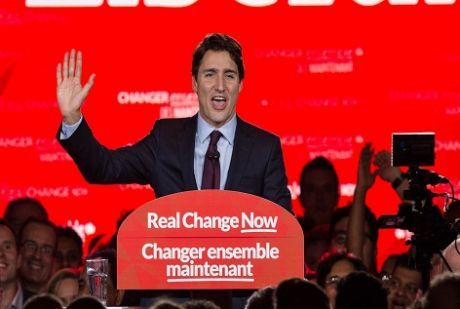News
You are here
Liberal budget: privatization, austerity and climate chaos

April 2, 2017
The Liberal Budget release on March 22nd claims to lead the way to the future through innovation in order to build a strong middle class, but in reality is a Harper budget, promoting privatization and austerity, while offering a few minor changes that will make a difference to relatively few people.
Privatization
The centrepiece of this privatization budget is the announcement that the government will soon propose new legislation to establish the Canadian Infrastructure Bank, “that will work with provincial, territorial, municipal, Indigenous and private sector investment partners to transform the way infrastructure is planned, funded and delivered in Canada ,,, responsible for investing at least $35 billion over 11 years … with a focus on large, transformative projects such as regional transit plans, transportation networks and electricity grid interconnections.”
This will further the privatization agenda, through the normalization of public private partnerships (P3) infrastructure projects. We should be worried because one of the first things they’ll do is “work in partnership with provinces, territories, municipalities and Statistics Canada to undertake an ambitious data initiative on Canadian infrastructure.” - they’re making a list of all the development needs for future infrastructure, and all the current maintenance requirements for current infrastructure and the Canadian Infrastructure Bank wants to put it all on the auction block.
Austerity
While more funding was provided for Home Care and Mental Health programs, health Care funding continues under Harper’s funding formula, based on the functioning of the economy rather than the needs of a growing population.
Additional money was earmarked for investment in First Nations communities health care and mental health infrastructure, but the Liberals could have allocated money to speed up the remediation of the water crises on first nations reserves. They’ll have to wait until 2021 for clean water.
Maternity leave can now be extended from 12 to 18 months but with no more money; so instead of 55% of income over 12 months, it works out to 33% of income for the whole 18 months. Working class mothers who are already struggling under the old system will not benefit from this change: only those with higher incomes would be provided with more flexibility under the rules. And new and previously announced money could provide up to 40,000 child care spaces over the next three years. But provincial differences in funding for child care spaces means that whether or not there are new spots depends on where parents live.
Climate chaos
Fossil fuel companies continue to get their fuel subsidies, and even got a one-time $30 million bump for this year. Unemployed workers, on the other hand, still face strict eligibility requirements for EI, and those that qualify suffer under inadequate benefits.
Overall, the nitty gritty of the new Liberal budget is that there are only a few differences from a Harper budget, promoting privatization and fossil fuels. One big difference is the rhetoric around climate change: the Liberals pay lip service to developing an environmentally sustainable economy. But the reality of their pipeline policies, inadequate investments in renewables and reliance on “Clean Growth” mean that instead of a just transition carbon emissions will continue unabated.
Join the conference One solution, revolution: Marxism 2017, April 21-22, including the session “The leap manifesto and just transition” with Avi Lewis and Carolyn Egan, and “Pipeline politics, from Standing Rock to Kinger Morgan” with Myeengun Henry, Billie Pierre and Valerie Lannon
Section:










